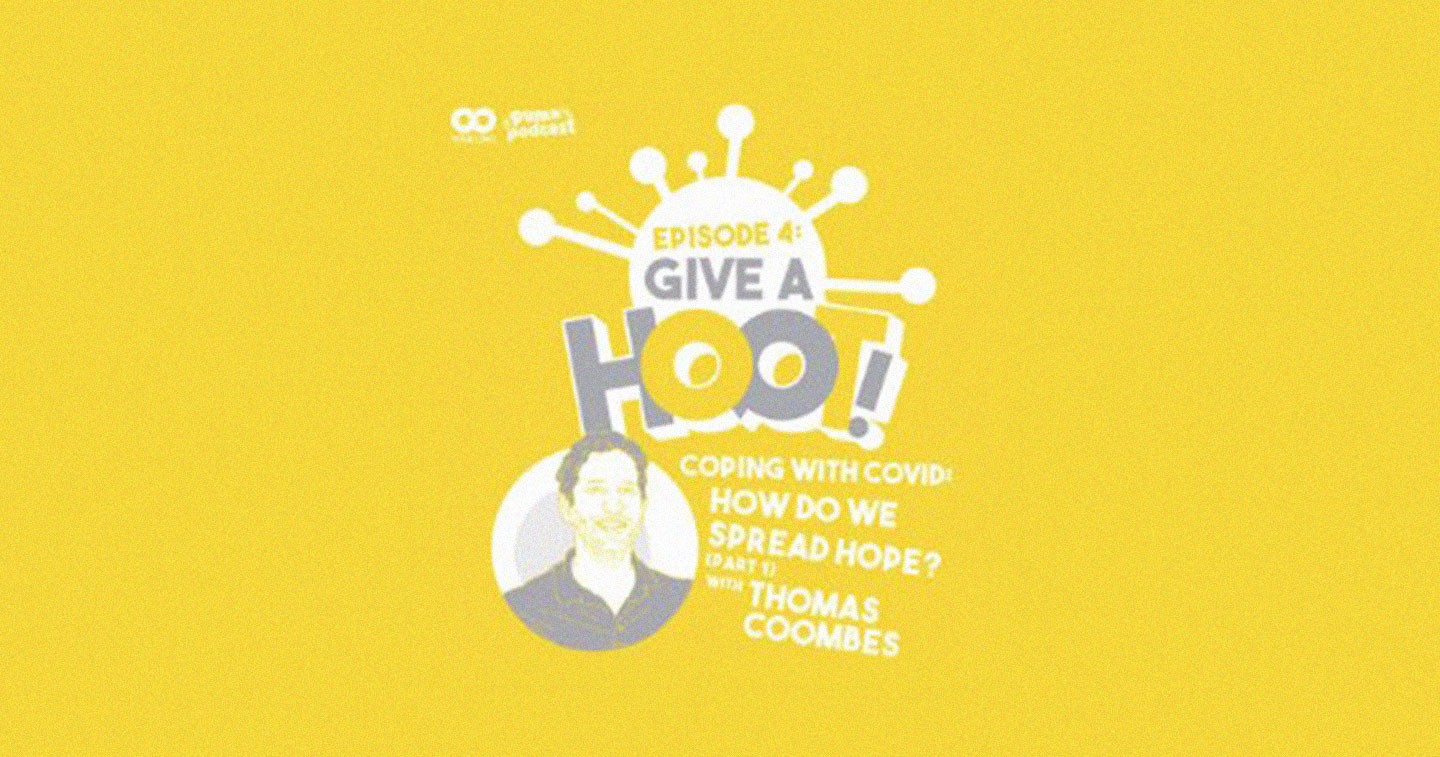MANILA, PHILIPPINES – More than a month into isolation, many Filipinos grow frustrated. The pandemic has affected livelihoods, people are being laid off, and social media posts that call out government policies and how these policies are being enforced on social media go viral almost every day. But what comes after our anger, and are we moving towards lasting change?
In the latest episode of the “Give A Hoot” podcast, hosts Mika Ortega, Joza Nada and Oya Arriola spoke with human rights strategist and global communication expert Thomas Coombes about hope-based communications. Coombes argues that to create lasting social change, we must move from fear to hope.
‘Hope is not about feeling good in the moment’
“Anger is the spark that starts the engine but hope is the fuel that keeps it moving,” says Coombes, who developed the model of hope-based communication after fifteen years of working to get people to care about human rights. “Hope is not about feeling good in the moment. It’s the belief that tomorrow can be better.”
A sense of hope will be crucial to our recovery from the economic and social effects of the pandemic, and the people and organizations working on solutions must communicate this feeling to the people.
“Hope-based communications is about making people believe in alternatives that we put forward,” he adds. While anger certainly has its place in calling out injustice, Coombes warns it can turn counterproductive unless people are shown a hopeful alternative to the status quo. “There’s always a space for anger, but in the long-term, anger can really lead to despondency. It saps energy and leaves people disappointed and tired.”
In fact, populist leaders have long benefited from division and anger. “The strategy of populist leaders is actually to encourage anger. It’s based on creating a sense of conflict of controversy and of crisis. NGOs need to come up with three Cs of their own—community, cooperation, and culture.”
‘You have to be the narrative’
During the quarantine, NGOs, private groups and ordinary citizens have stepped up to organize numerous online fundraising initiatives for communities in need. Stories of local governments that have responded with empathy and innovation have also gone viral. It is important to communicate these initiatives—to not only to tell the public that it is dark, but to show where the light is.
“If you want to change the narrative, you have to be the narrative,” Coombes says. “Often our inclination is to tell the story of inhumanity. We think that awareness of inhumanity will drive action, but actually it’s also telling the stories of humanity that drive action. If you want your audience to behave a certain way, you actually need to show people like them behaving that way.”
There is a scientific basis behind this notion. “I’m actually working with a neurobiologist and psychologist called Laura Ligouri,” says Coombes. “Laura has actually put forward the idea that if we only show the form of behavior that we’re against rather than how we actually want people to behave, subconsciously you may actually reinforce the bad behavior.”
“When we just base our communications on criticizing the opponent, basically the opponent becomes the story and we’re just playing a part in their story,” Coombes adds. So how do we balance accountability with hope? “What I’m starting to find more effective is we need to sort of set the standard of what they should do instead.”
One great example? Nobel Peace Prize laureate Nelson Mandela, who led South Africa with a message of healing after apartheid—even though he himself had been
imprisoned for 27 years. “Instead of saying all white people were to blame for apartheid, he actually started to show them empathy,” says Coombes. “And essentially have faith and trust in their own humanity, which then encouraged them to live up to that standard.”
“Give A Hoot!” is a podcast about how to use communication for social change, from the communication strategists of WiseOwl. Listen on Spotify,Apple Podcasts,or wherever you listen to podcasts. “Give A Hoot!” is powered by PumaPodcast.
Follow the podcast on Facebook: fb.com/giveahootphFollow PumaPodcast on Facebook: fb.com/pumapodcastph









